|
2022-10-3
瑞士画家Jean-étienne Liotard(1702 - 1789)有一幅静物粉彩,画的是乾隆时期的中国或英国茶具,收藏在洛杉矶的盖蒂艺术中心的博物馆里,对于研究中国外销瓷和茶文化的人,是一个很好的佐证。
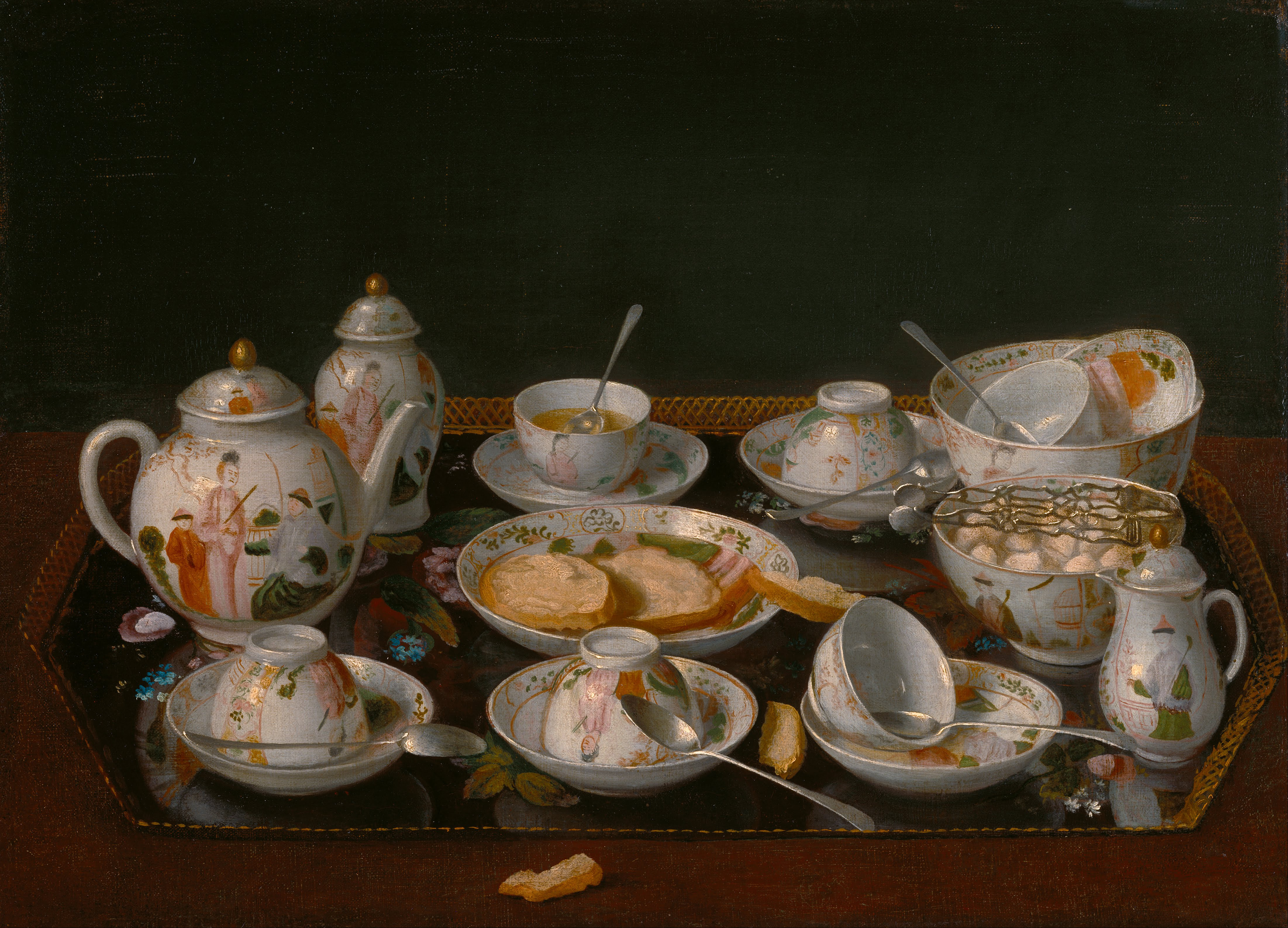
In this painting of tea-time disarray, a tray is set with six cups and saucers, a teapot, sugar bowl, milk jug, and a lidded vase perhaps containing an extra supply of tea leaves. A large bowl holding a teacup and saucer could also be used for dumping the slopes of cold tea and used tea leaves. By the time Liotard painted this work in the late 1700s, tea drinking had become fashionable among the middle as well as upper classes. Liotard contrasted the luxurious materials of Chinese porcelain and silver with a cheaper tray of painted tin, known as tôle that imitated Asian lacquer. Combining the transparent, reflective, and brightly-patterned objects allowed the artist to portray strong visual contrasts.
之所以说是英国的瓷器,因为有人做过考证,只有英国Lowestoft软瓷,才有这样的粉笔绘画效果,并在维多利亚和大都会博物馆里,找到了实物:
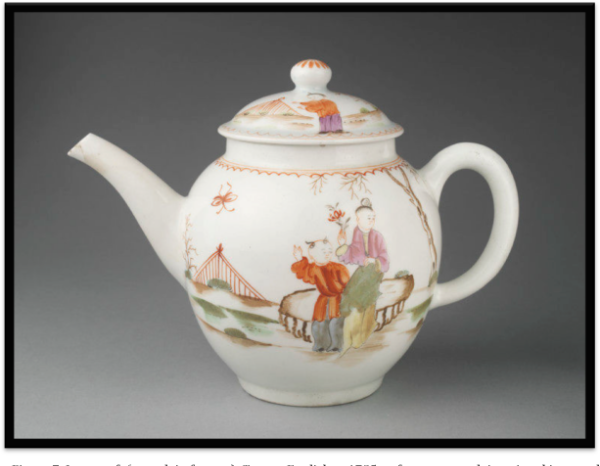 | 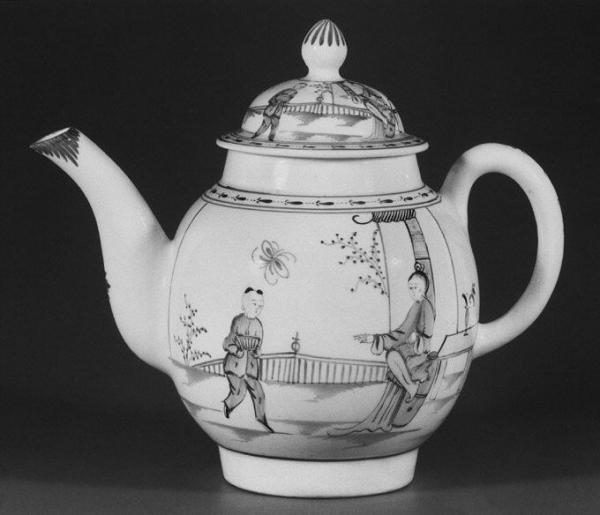
| | 英国V&A博物馆藏品 | 纽约大都会博物馆藏品 |
Jean-étienne Liotard创作的类似茶具咖啡具的粉彩画,还有多幅,都是他晚年的创作:
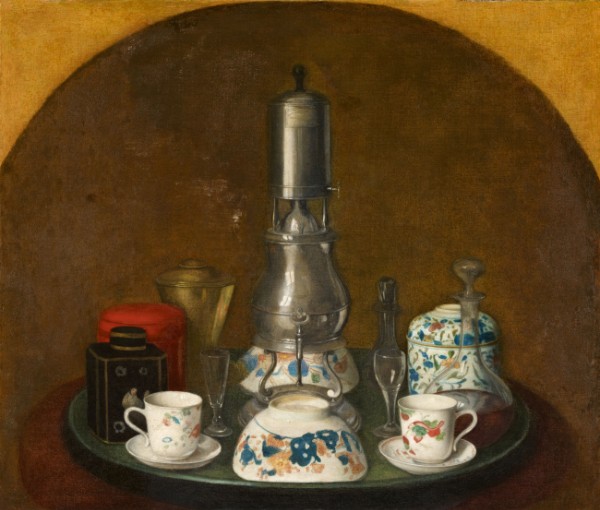
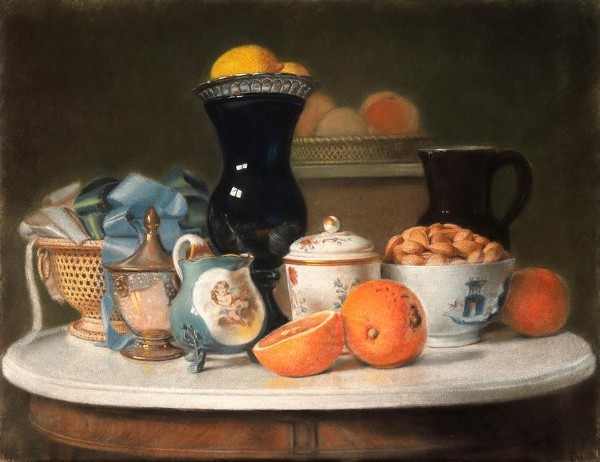
Chinese porcelain and tea-drinking were the rages of fashionable Europe when Jean-étienne Liotard was born. He began painting tea and coffee sets in the last two decades of his life when age, changes in taste, and his political beliefs caused a decline in requests for the pastel portraits that were his specialty. He had, however, been including fruit and porcelain still lifes in some of his portraits since about 1740. Only five of his paintings of tea and coffee sets are known today.
吃早餐的荷兰女郎(A Dutch girl at breakfast),是Jean-étienne Liotard 创作的不多的油画,在英国拍出了天价,目前珍藏在阿姆斯特丹博物馆:
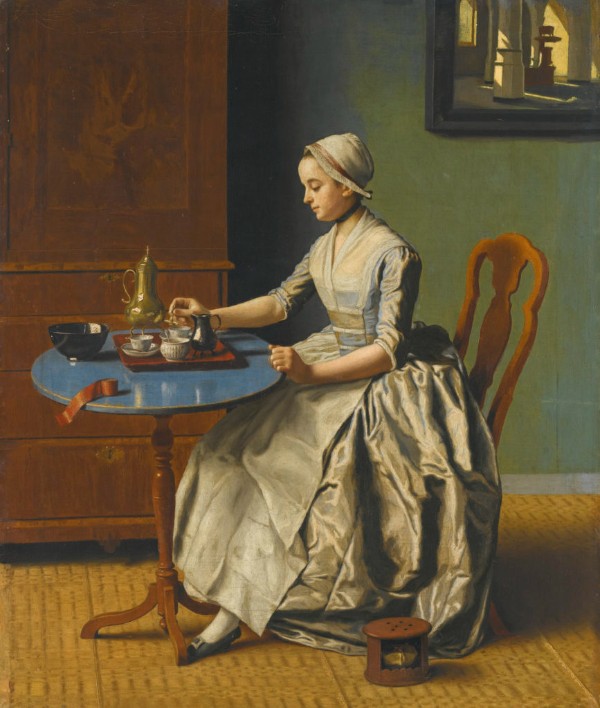
Lady Pouring Chocolate (Dutch girl at Breakfast) (1744) is an oil on canvas painting by Swiss artist, Jean-Etienne Liotard. Liotard’s subject is one of total simplicity and tranquillity. In a quiet and modest interior, a young woman sits at her ease at a tripod table, where she pours a cup of coffee from a silver pot into a porcelain cup. The girl is demurely dressed in a grey-brown and blue dress and cream pinafore, her hair tied beneath a simple white lace cap with a brown ribbon. The interior is modestly furnished with a plain wooden armoire, the floor covered with simple straw matting. Behind her on the wall hangs a Dutch 17th-century painting of a church interior. The table top is slightly tilted so that the artist can give full rein to his skill in rendering its polished blue surface and the depiction of the porcelain and silver on a red lacquer tray that comprises the coffee service. The composition is beautifully balanced, with the verticals of the armoire and chair offset by the circles formed by the tabletop, the foot warmer, and the shadow cast on the floor behind the seated girl. The overall tonality is equally serene, the diffuse light entering from the left playing over a harmonious range of earthy colors: the brown of the table and chair, the cream of the floor and pale green walls, and the white of the girl’s cap and apron, illumined by the blue accents of her dress and the table-top. Tiny passages of color, such as the red ribbon on the tabletop, or the blue ribbon around the girl’s neck, subtly underpin this harmony.
类似的一幅彩笔画,也是吃早餐喝巧克力奶的场景,最近从英国购买并珍藏在华盛顿国家美术馆,美东的居民,可以抽空去瞄一眼。
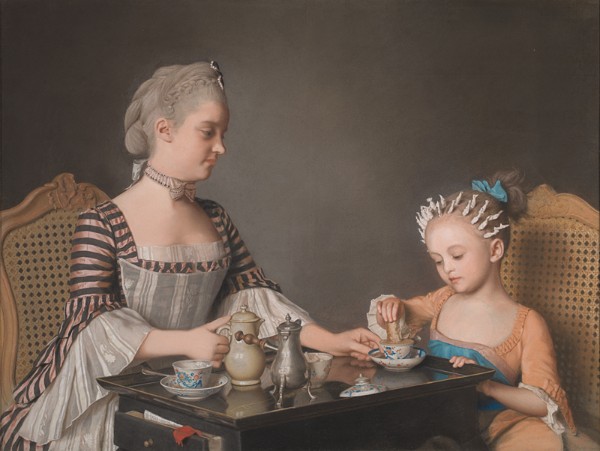
The Lavergne Family Breakfast, which has been on loan to the Gallery since October 2018, is the second work by Jean-Etienne Liotard to enter the National Gallery’s collection and is his largest and most ambitious pastel. The work has long been regarded as his masterpiece. Liotard was one of the most important pastellists of the 18th century, his works were both highly sought after and highly-priced. In mid-18th-century London, a pastel head by Liotard commanded a higher fee than a full-length portrait in oil by the young Joshua Reynolds, later the first President of the Royal Academy. The Lavergne Family Breakfast depicts a luminous early morning scene with an elegantly dressed woman and her daughter, paper curlers still in her hair, enjoying coffee and chocolate which were exclusive, luxurious beverages at the time. Liotard, in a highly unusual move, deftly builds up layers of thick wet pastel to create the illusion of reflections on the silver coffee pot and Chinese porcelain. Although The Lavergne Family Breakfast is not strictly a portrait, its sitters have long been associated with the Lavergne family, relatives of Liotard’s who lived in Lyon and it is likely that the sitters were Liotard’s niece and one of her own nieces. The pastel was bought in 1755 by Viscount Duncannon, Liotard’s most important patron, and has remained in Britain ever since.
可是在Jean-étienne Liotard所有的绘画中,有一幅更为知名,叫《巧克力女郎》(The Choclate Girl),号称是一个女郎,温暖了一座城市。
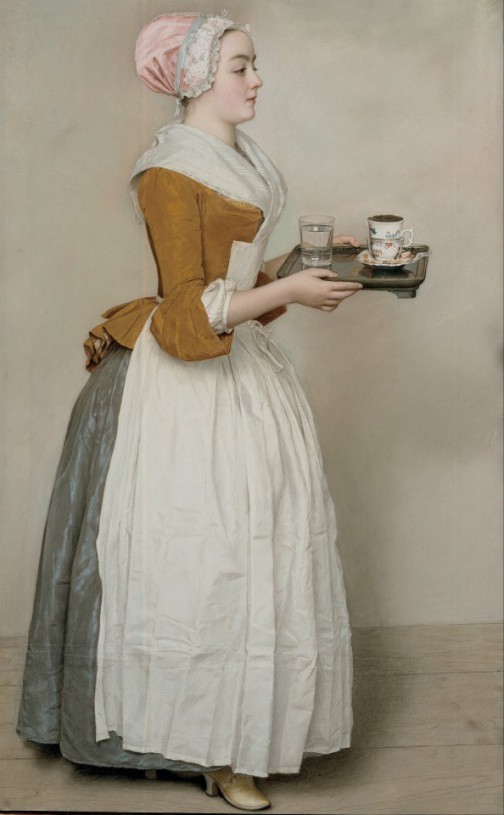
The Chocolate Girl (known also as La Belle Chocolatière, or Das Schokoladenmädchen) doesn’t take any notice of the viewer fully concentrating on serving the hot chocolate, which Liotard depicts almost as a chic ritual. Chocolate was a luxury drink at the time and could be afforded only by the nobility or merchants. Liotard painted The Chocolate Girl between 1743 and 1745, during his stay in Vienna at the court of the Austrian Empress Maria-Theresia. It was common back then that young pretty girls from families of lower nobility were recruited to the court as maidens or companions to princesses. While it has never been determined with certainty who was the model for this portrait, it is possible that it was one of the maidens at the court who simply impressed the artist with her beauty.
关于这幅画作的传说和研究,不胜枚举:
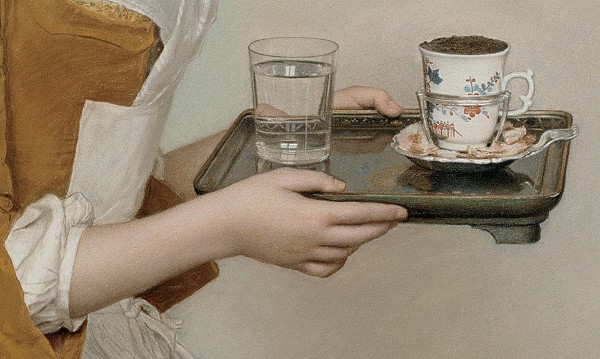
There is of course another interpretation that reads more like a fairy-tale but nevertheless offers a convincing explanation of this finely painted portrait and its subject. It is thought that the chocolate girl was a daughter of an impoverished knight Anna Balthauf, who worked in one of the chocolate shops in Vienna. One day, Prince Dietrichstein, a young Austrian nobleman visited the shop and fell in love with Anna and soon thereafter asked her to marry him. The present work could be commissioned to Liotard as a wedding gift, portraying Anna as the Prince first saw her.
这幅画,珍藏在位于德国德累斯顿的历代大师画廊(Gemäldegalerie Alte Meister)。是德累斯顿国家艺术收藏馆的一部分,以藏有艺术史上众多大师的杰作而着称。
https://www.youtube.com/watch?v=bkIJ9l1huqY
It was thanks to the art dealer Algarotti, who purchased the Chocolatière directly from the artist for the Dresden Pastellkabinett in 1745, that the Gallery began to show works by contemporary artists. The pastel medium suited the Rococo taste for lifelike, brilliant portraits: Liotard created flawless, porcelain-smooth surfaces. The enormous popularity of the picture, however, also rests on the fact that it depicts a simple, unidentified housemaid, a hitherto rare motif.
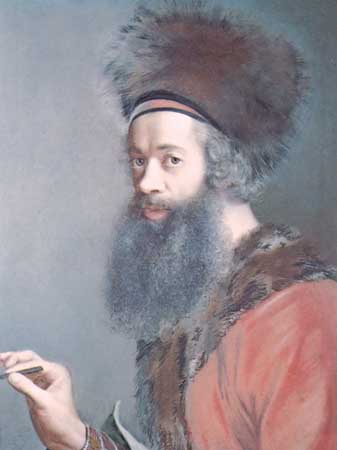
Jean-étienne Liotard(1702 - 1789)的自画像
|
|
